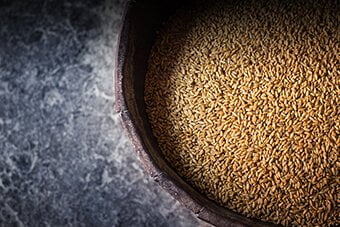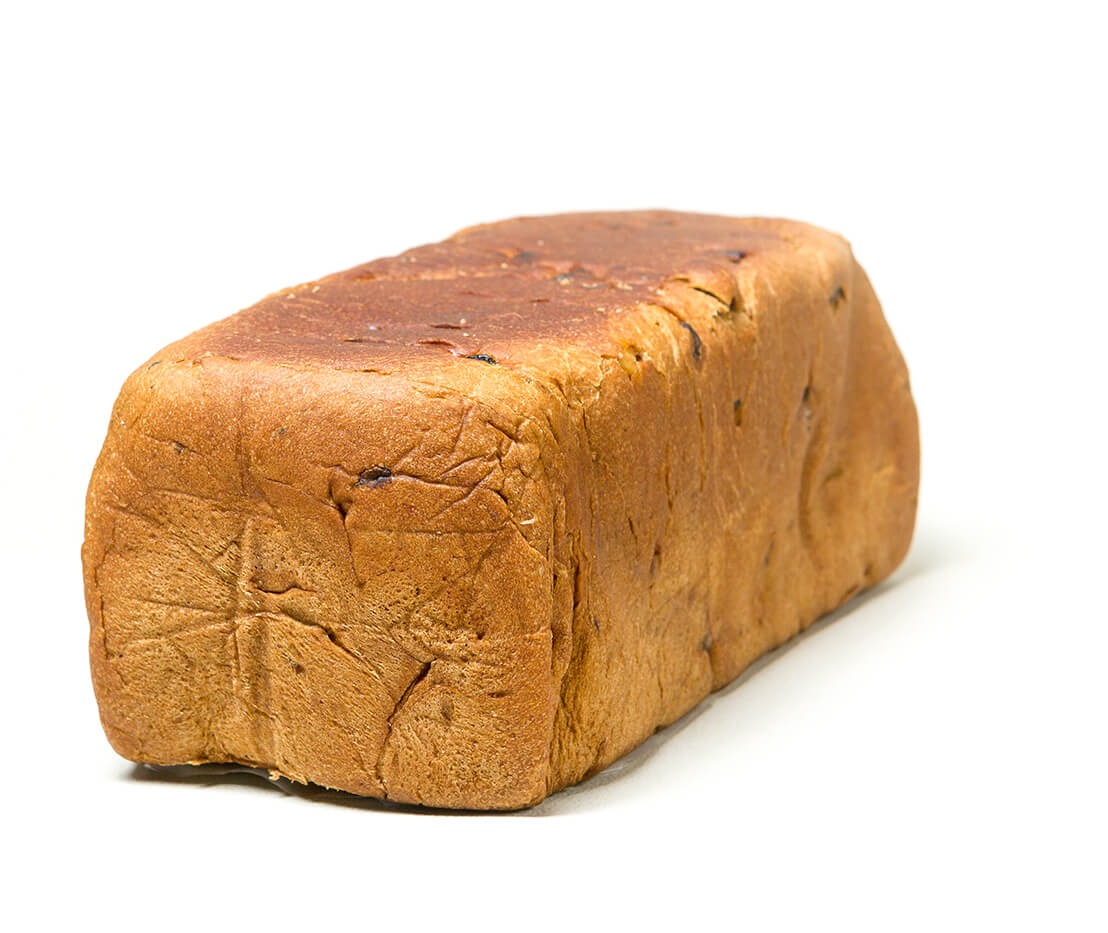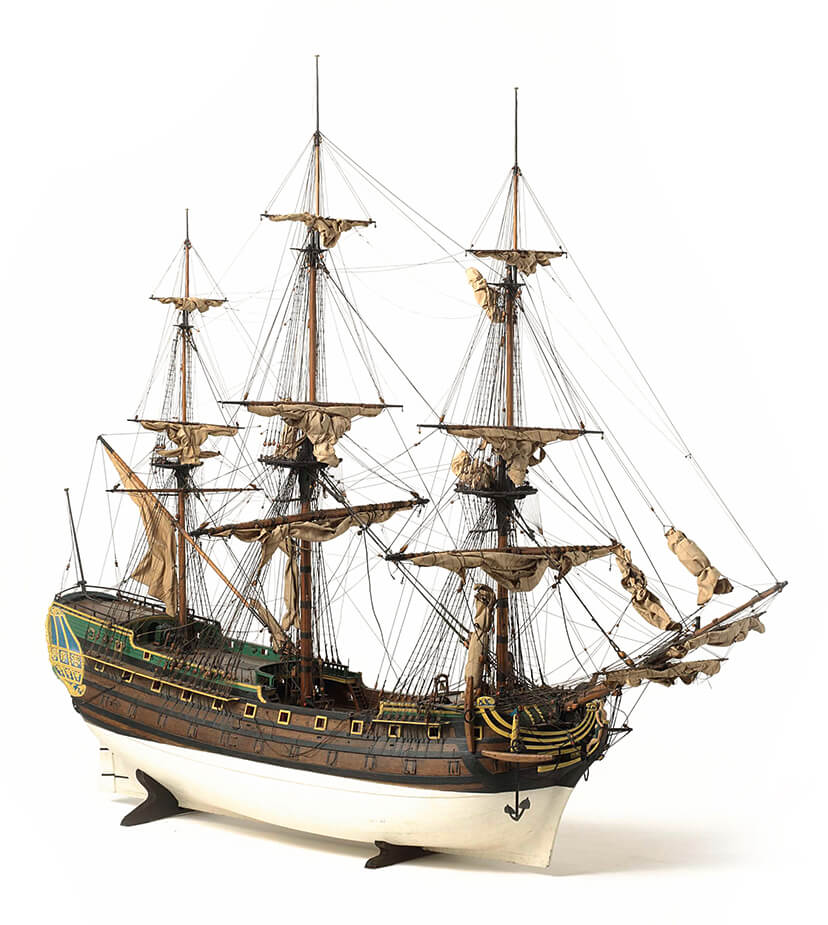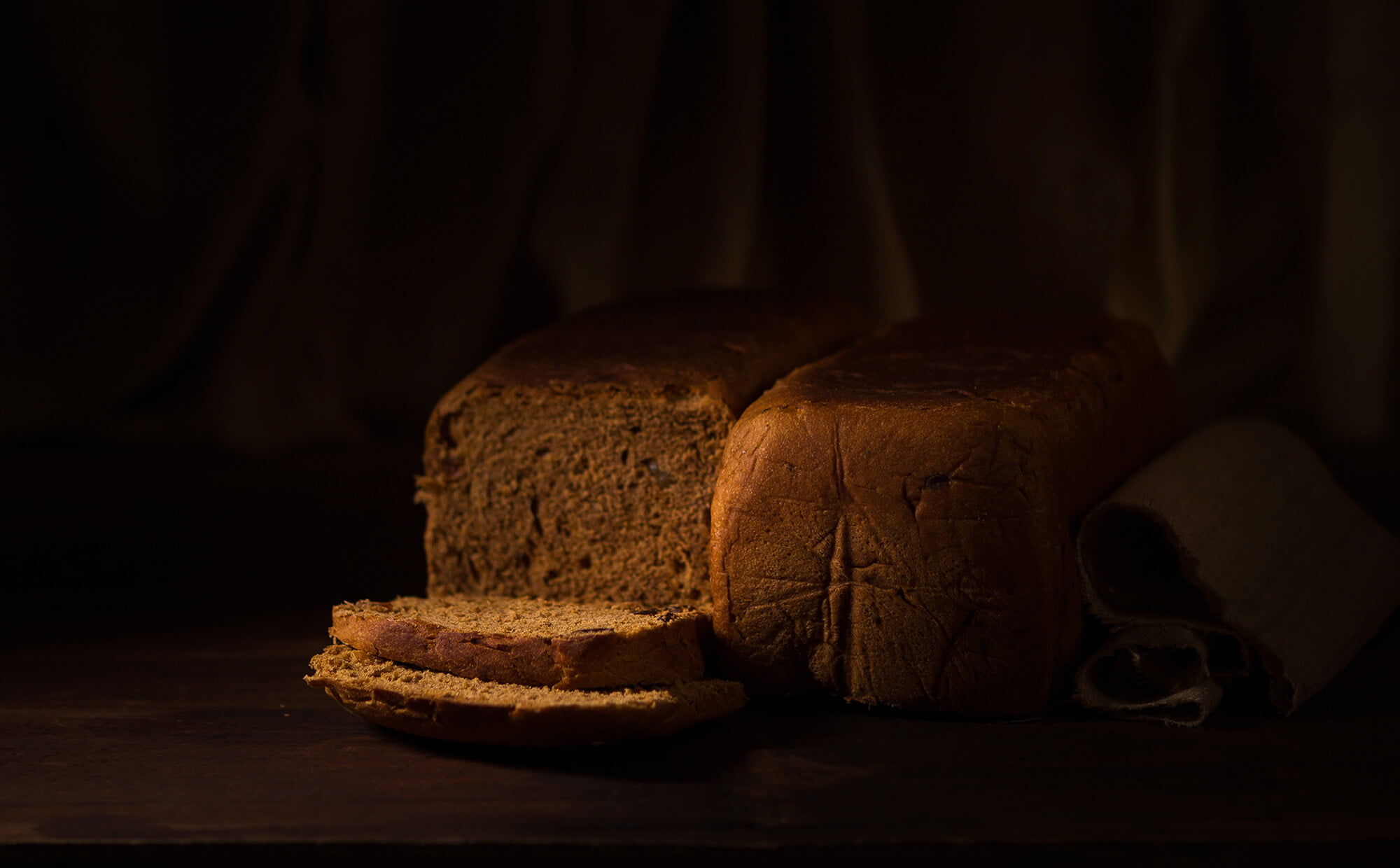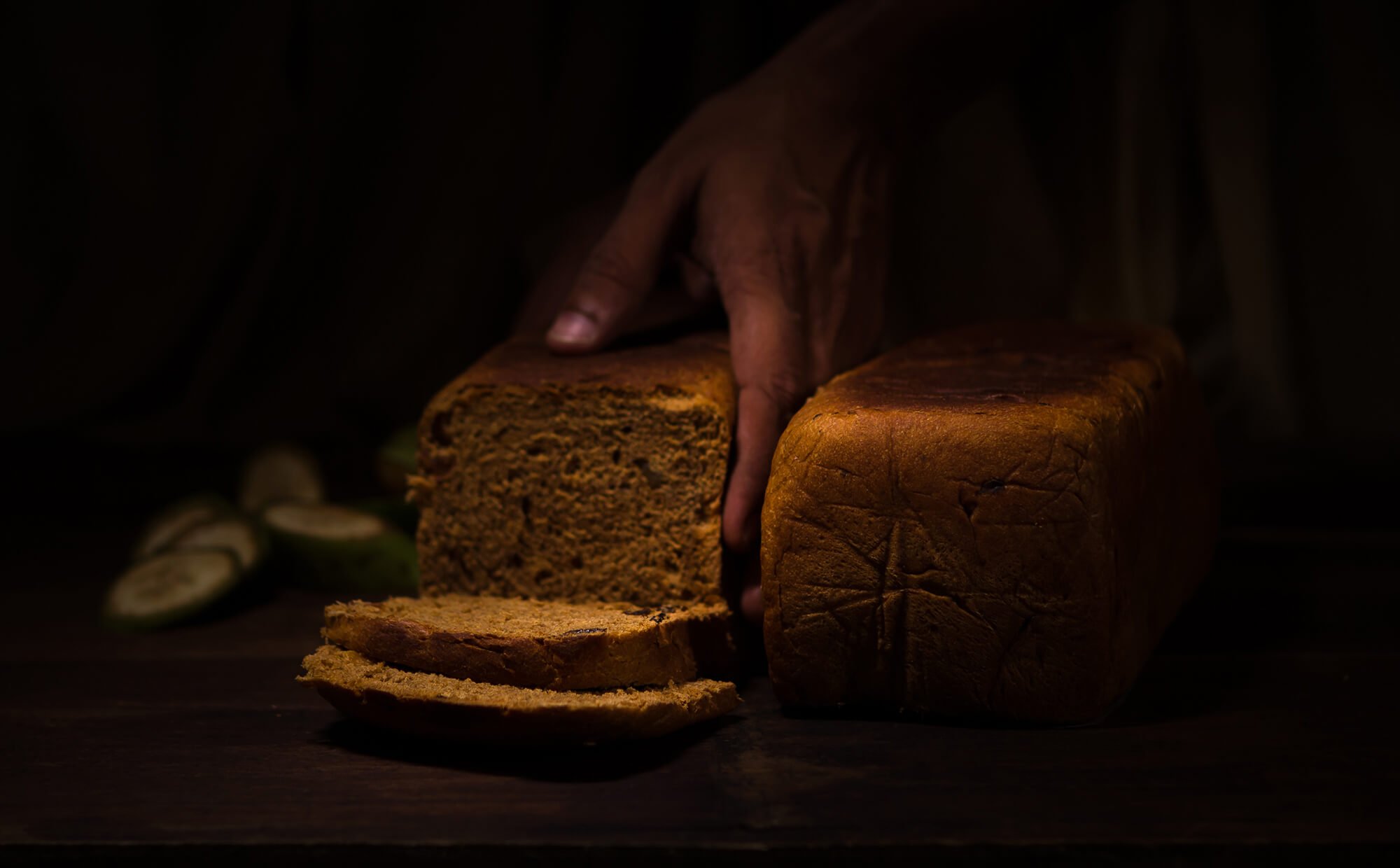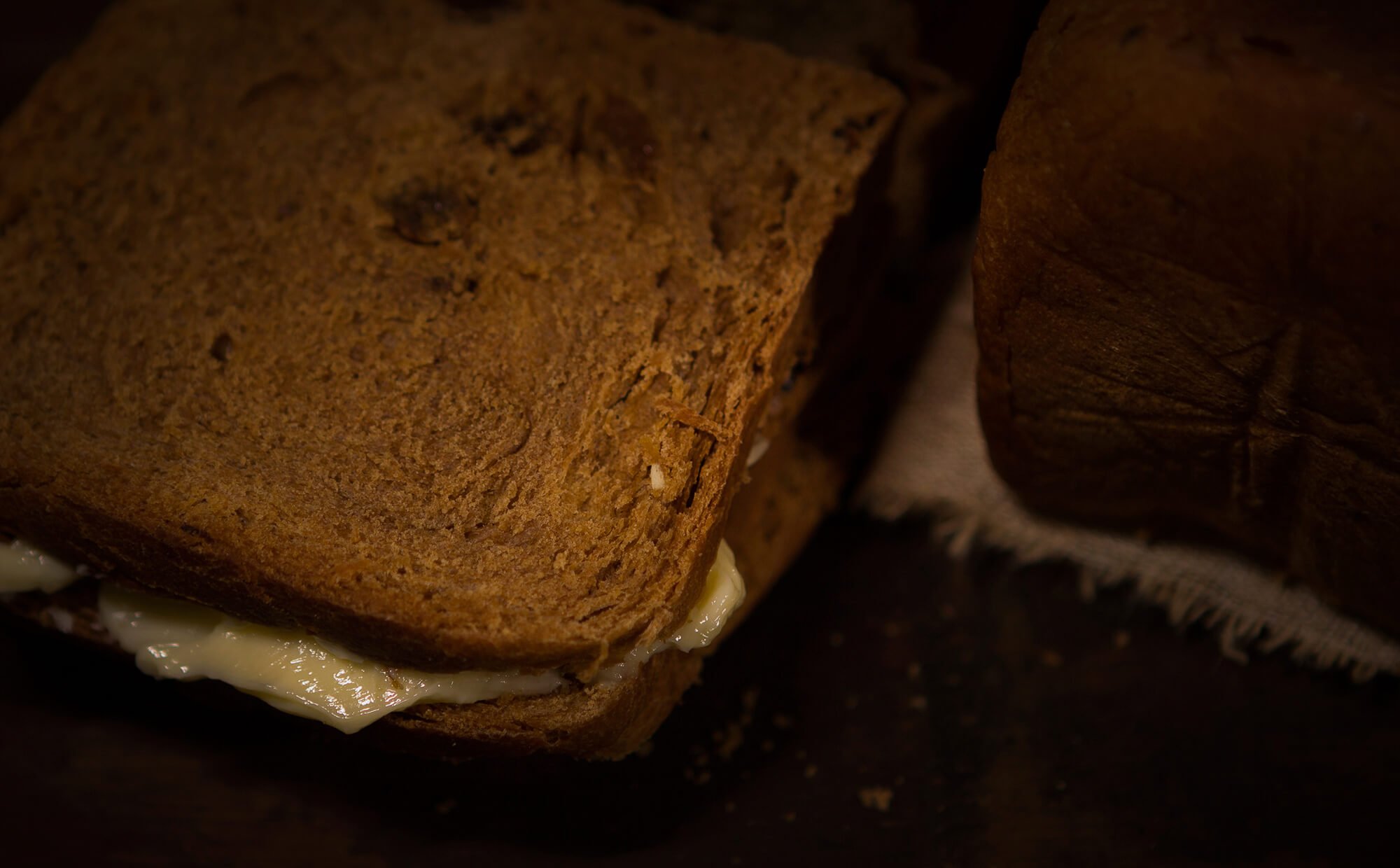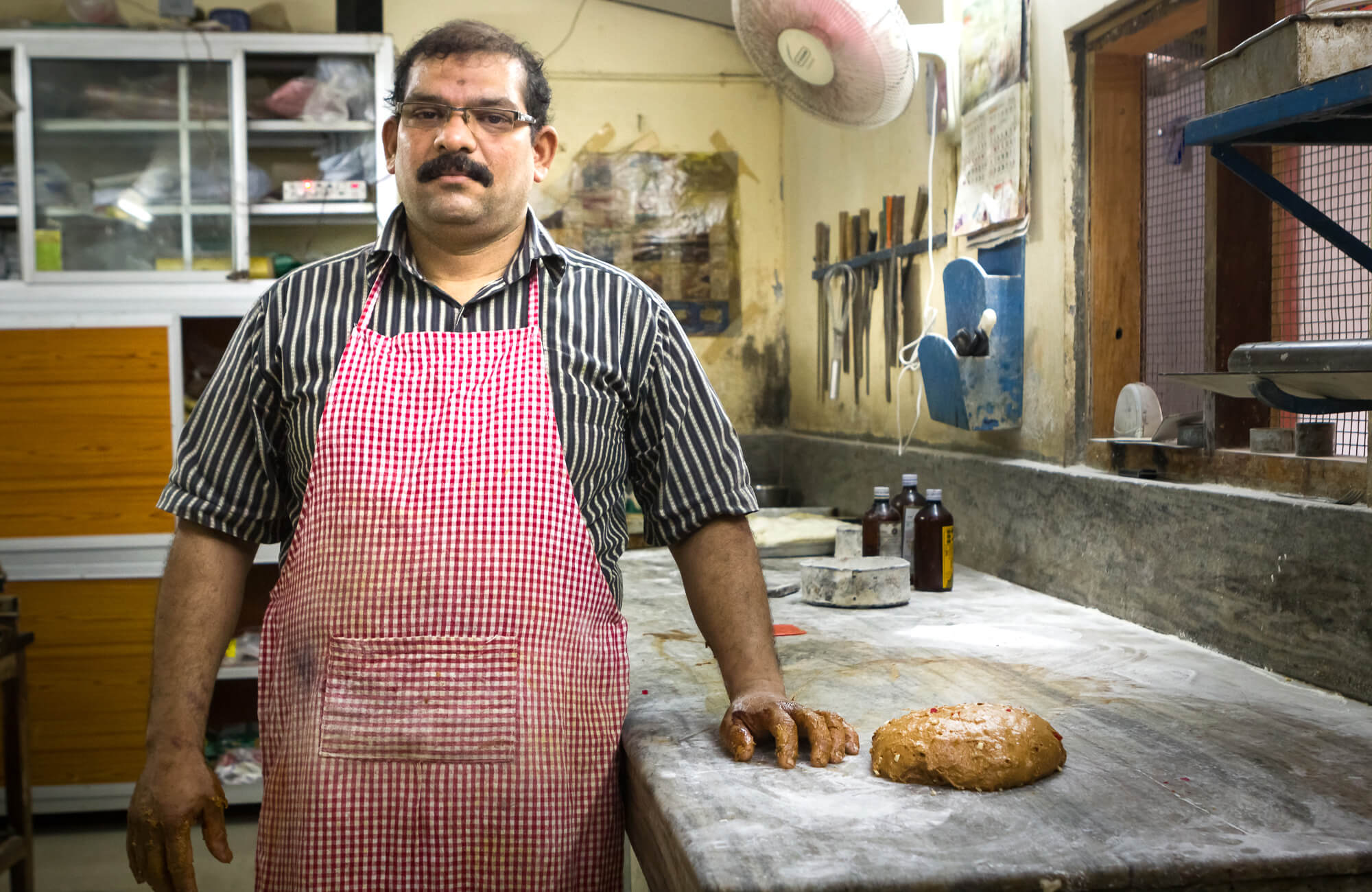The Story of a Dutch Bread called Breudher
Tracing the culinary history of breudher, a sweet bread which is a part of the Anglo-Indian cuisine of Kochi and also made by the Eurasian communities in Sri Lanka and South East Asia.
Text: Ananya Rajoo
Photographs: Ananya Rajoo, Aravind Jose & Sudhith Xavier
Cover Art: Sudhith Xavier
Fort Kochi was a Dutch colony for more than a century. After two major wars, the second one lasting for more than two months, the Dutch conquered the fort from the Portuguese and from the seventh day of the year 1663, they were the rulers of Fort Kochi. It remained so until 1795, when the fort was surrendered to the British. With each wave of colonisation, the culinary landscape of this city was modified in varying degrees. The cuisine of the coloniser and the colonised intermingled, often creating culinary wonders which were an interesting synthesis of distinct cooking styles and elements. Compared to the European colonists who came before and after them, the Dutch influence on Kerala cuisine is not so conspicuous. While discovering the culinary treasures in the southern tip of India, they subtly modified the cuisine of the area and seasoned many dishes with an ounce of Dutchness. A remnant of these gastronomic interactions, a testament to the baking skills of the western European navigators, still exists in Fort Kochi thanks to a few old bakers who have gone the extra mile to safeguard the recipe of a sweet, buttery bread called breudher.
In the diverse culinary culture of this port city, where a myriad of ethnicities co-exist, breudher is a gastronomic memoir of the rich and pompous colonial past. Anglo-Indian culture, and consequently its cuisine, continues to have a strong presence in Fort Kochi and though in a small way, this Eurasian palate has kept Breudher making alive in Fort Kochi. Breudher has a distinct flavour and a tantalising aroma. The Anglo-Indians call it the Dutch cake. Its texture is more like a bread whereas the flavour is more like a cake, especially the Kerala plum cake. Maida, sugar, eggs, butter / ghee, yeast and raisins are the key ingredients in this breakfast cake eaten on festive days, especially on Christmas mornings. The recipe has many local variants based on minor changes in the ingredients used. In Quality Bakery, Fort Kochi, candied orange peel is added to the bread dough for baking sweet and zesty breudher breads whereas in the bakery at Elite Hotel, Fort Kochi, a blend of ground spices goes into the making of their breudher which has a masala tinge. In the past, Fort Kochi hosted a large number of Anglo-Indian parties and buttered Dutch cake with Chingan bananas had a special place among the many dishes served during the sumptuous feasts.
With each wave of colonisation, the culinary landscape of this city was modified in varying degrees. The cuisine of the coloniser and the colonised intermingled, often creating culinary wonders which were an interesting synthesis of distinct cooking styles and elements.
Model of the 58-gun East Indiaman Merkurius.
Photo Courtesy: Rijksmuseum
Like the Anglo-Indians of Fort Kochi, Eurasian communities in many other parts of Asia have breudher in their cuisine. The name and the recipe varies within these communities, and unlike Fort Kochi where breudher is popularly known as a type of bread, in most of the Eurasian regions, breudher is described as a buttery yeast cake. Breudher making is still prevalent in some regions in Indonesia, Sri Lanka, Singapore and Malaysia. All of these places were Dutch colonies in the past. Fort Kochi and other Indian ports were the last of Asian cities to come under the Dutch rule and perhaps, breudher was a creole recipe developed in one of the older colonies and introduced in Kochi after its Dutch conquest. In the past, breudher was in great demand and several bakeries in Fort Kochi made it regularly. With many Anglo-Indians moving out from Fort Kochi and the popular foods overshadowing the traditional dishes, Breudher is now a rarity in this colonial town. It has become a baking tradition continued by a few old bakeries and catering to a dwindling customer base.
The texture of breudher is more like a bread whereas the flavour is more like a cake
Photo: Sudhith Xavier
Breudher is a breakfast cake eaten on festive days, especially on Christmas mornings
Photo: Sudhith Xavier
Quality Bakery is the most widely known Breudher makers in Fort Kochi. It is a charming and quaint bakery housed in a small room by the side of a silent street in Pattalam. The bakery was founded almost 50 years ago by the late C. V. Chandran. His wife, Santha Chandran, says that the bakery follows the breudher recipe used by her late husband. He started his baking career at a young age and has worked in various bakeries in and around Fort Kochi. The breudher recipe was among the culinary treasures he acquired during his long career and when he started his own bakery, he included breudher in its list of breads, to cater to the Anglo-Indian gourmands of the place. Chandran passed away 6 years ago and the current breudher maker at Quality Bakers, Anil, learned the craft from him.
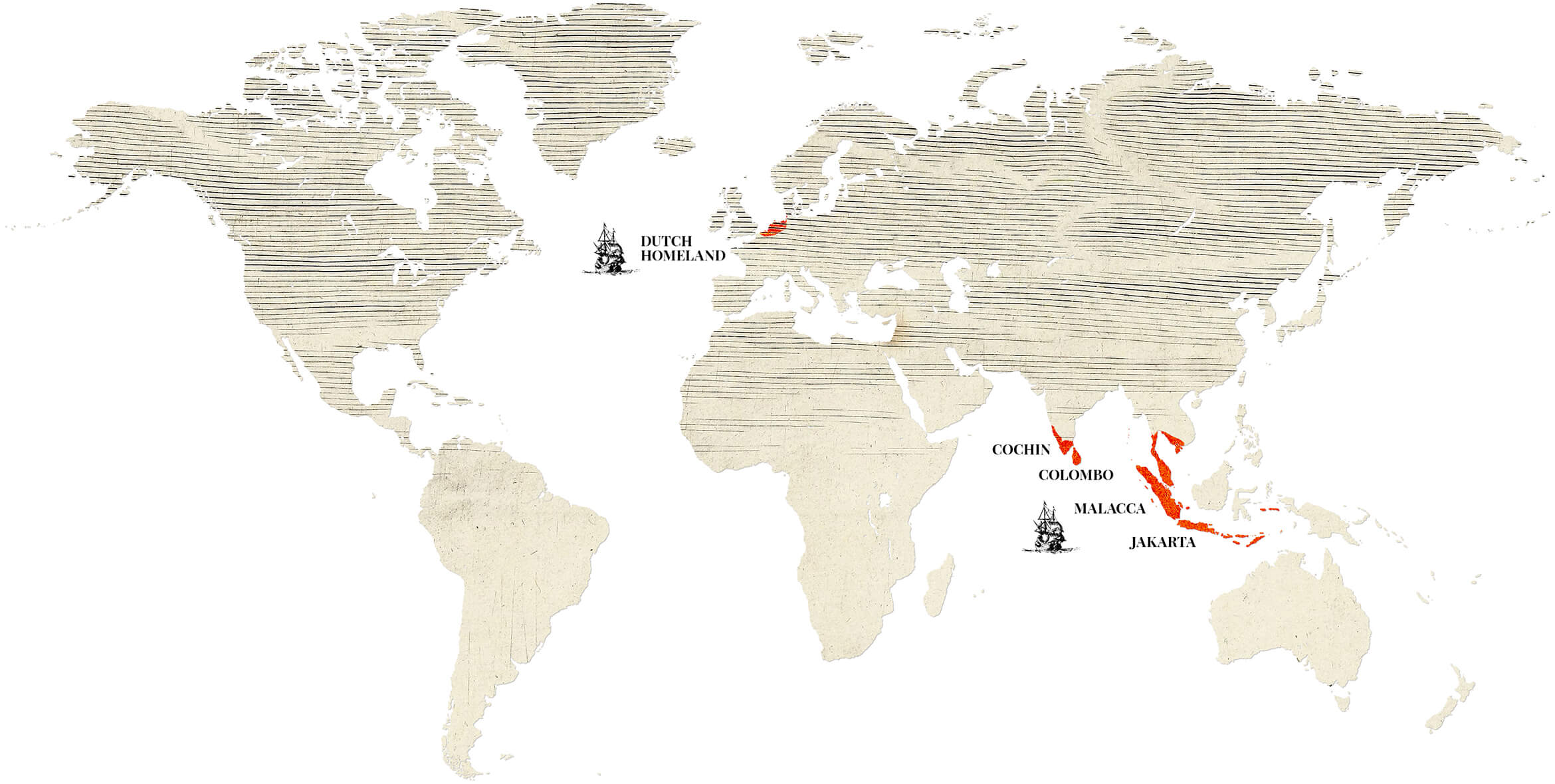

Places where Breudher is still a part of the local cuisine.
Illustration: Sudhith Xavier
An article published in The Hindu in 2009 mentions how Chandran learned Breudher making - “Mathai used to bake the bread at Kota (in Fort Kochi) and then supply it to the large Anglo-Indian population, especially at the Vypeen Island. I learnt to make it from him.” The same article also includes Chandran’s suggestion for an excellent accompaniment to breudher - “Try it with mutton kurma, it’s quite a delicacy.” At Quality Bakers, breudher is baked on all Saturdays and made to order on other days.
Elite Hotel is another place where breudher making stays alive. Located at Princess Street in Fort Kochi, Elite has a bakery where breudher is made to order by their chef M. B. Asheeq. Elite was started by the late P. M. Thommen and is currently owned by his youngest son P. T. James. “We started the bakery in 1963. We were making Breudher from then. Back then, there were lots of Anglo-Indians over here and like making the bread, we used to make breudher everyday. It used to go but not now,” says James. He also mentions that breudher has ritualistic significance in their community. Breudher is served as breakfast for the wake observed seven days after a funeral. Christmas mornings also begin with a breakfast of breudher and butter.
Ernest Luke Netto, an Anglo-Indian who used to spend December holidays in Fort Kochi during his childhood, recalls starting the food-heavy Christmas days with a breakfast of breudher made by his mom and aunt. Ernest is a passionate cook and for him, the breudher recipe is a cherished gastronomic inheritance from his family. There is no obvious Dutch connection in his family ancestry but breudher is a part of their traditional cuisine which is the Anglo-Indian cuisine of Kerala. Like in most parts of the world, Eurasian cuisine in Kerala is a confluence of culinary traditions from various parts of the world and has a distinct identity of its own. Breudher is among the many dishes which were born out of this synthesis.
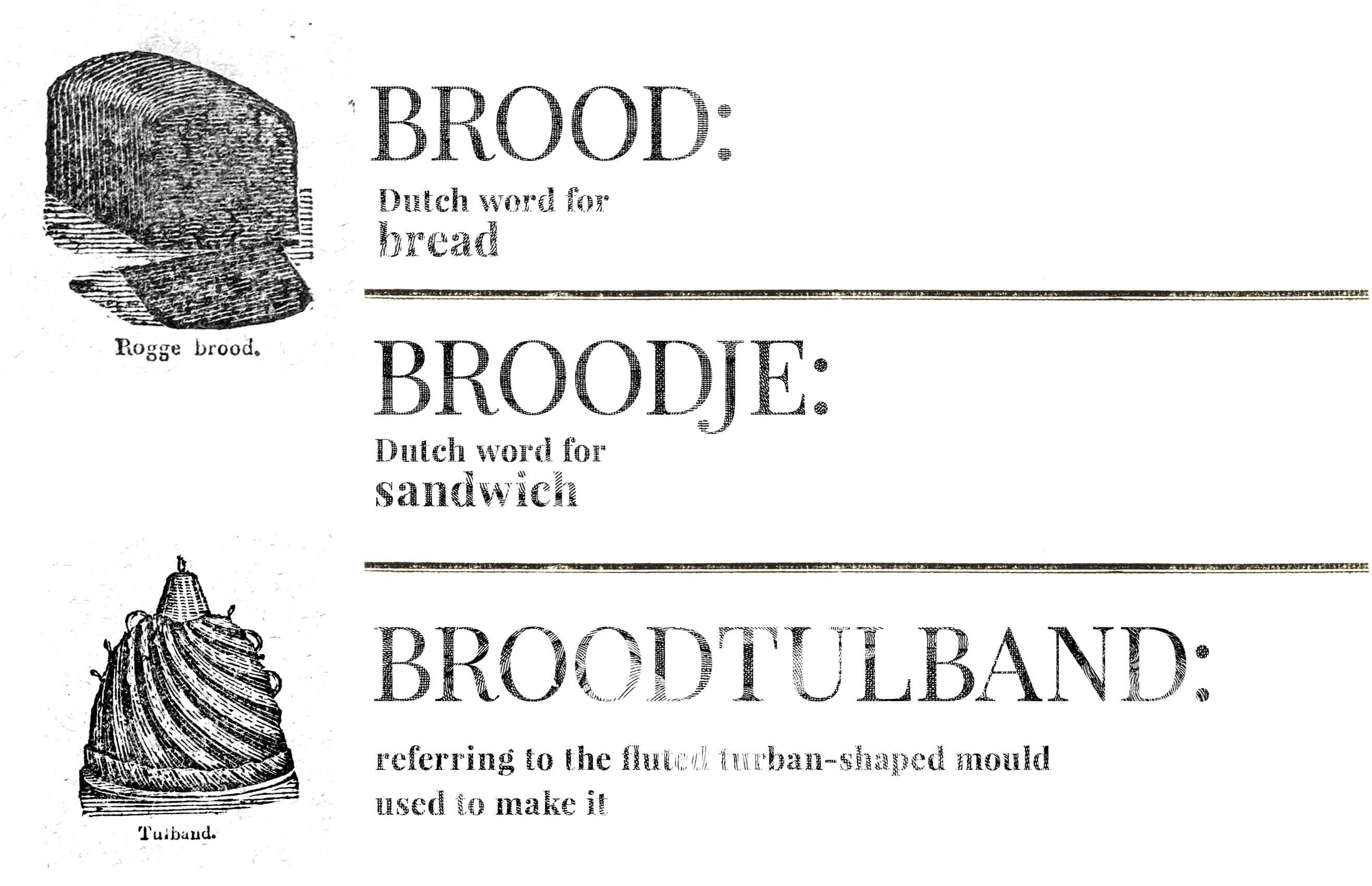

The origin of the word breudher is uncertain. It is quite obvious that the root morpheme must be the Dutch word for bread, ‘brood.’
Illustration: Sudhith Xavier
The Dutch have many breakfast cakes and breads but it is difficult to find something exactly like breudher in Dutch cuisine. There a few breads which are similar to breudher in varying degrees. ‘Ontbijtkoek,’ literally translated as ‘breakfast cake,’ is one of those breads. It is also called ‘peperkoek’ which means pepper cake. Like breudher, ontbijtkoek is also a sweet breakfast bread with spices, eaten with butter. A major difference is the use of rye instead of maida in ontbijtkoek. The etymology of the word ‘breudher’ is also difficult to trace. The Dutch word for bread, ‘brood’ is a probable root morpheme. Or breudher could be a modification of the Dutch word for sandwich ‘broodje.’ In an article titled ‘Forgotten Foods & Mealtime Memories’ in Biblioasia, a publication by National Library Board of Singapore, food writer Sylvia Tan notes that breudher is a derivate of “the Dutch word ‘broodtulband,’ referring to the fluted turban-shaped mould used to make it.” ‘Broodtulband’ translates to ‘bread turban.’ Brudher was originally baked in brass pans with swirled ridges, similar to bundt pans. The Eurasian Collection, a book by Eurasian Association, Singapore, featuring 150 artefacts and family heirlooms of the Eurasian community, lists brass cake moulds used to bake breudher as one of the artefacts. Though the bakers in Kochi make it like a bread loaf, in most places, breudher is still baked in bundt pans.
The name also has several versions like bluder, brudel and blueda. The first two are used mostly in Indonesia and blueda is often used in Singapore. Bluder is popular among the Eurasian communities of Malacca, a Malaysian state which was a colony of the Dutch East India Company for 184 years. Out of all the places where breudher has survived the test of time, it is made most extensively in Sri Lanka. Sri Lanka was under the rule of the Dutch East India Company for more than one and a half centuries and the island nation has a rich Dutch heritage. Breudher belongs to the cuisine of Ceylonese Dutch Burghers, an ethnic group that largely descended from the Dutch. Breudher is one of the recipes listed in ‘Ceylon Daily News Cookery Book’ from 1927, a go-to guide for Sri Lankan cooking.
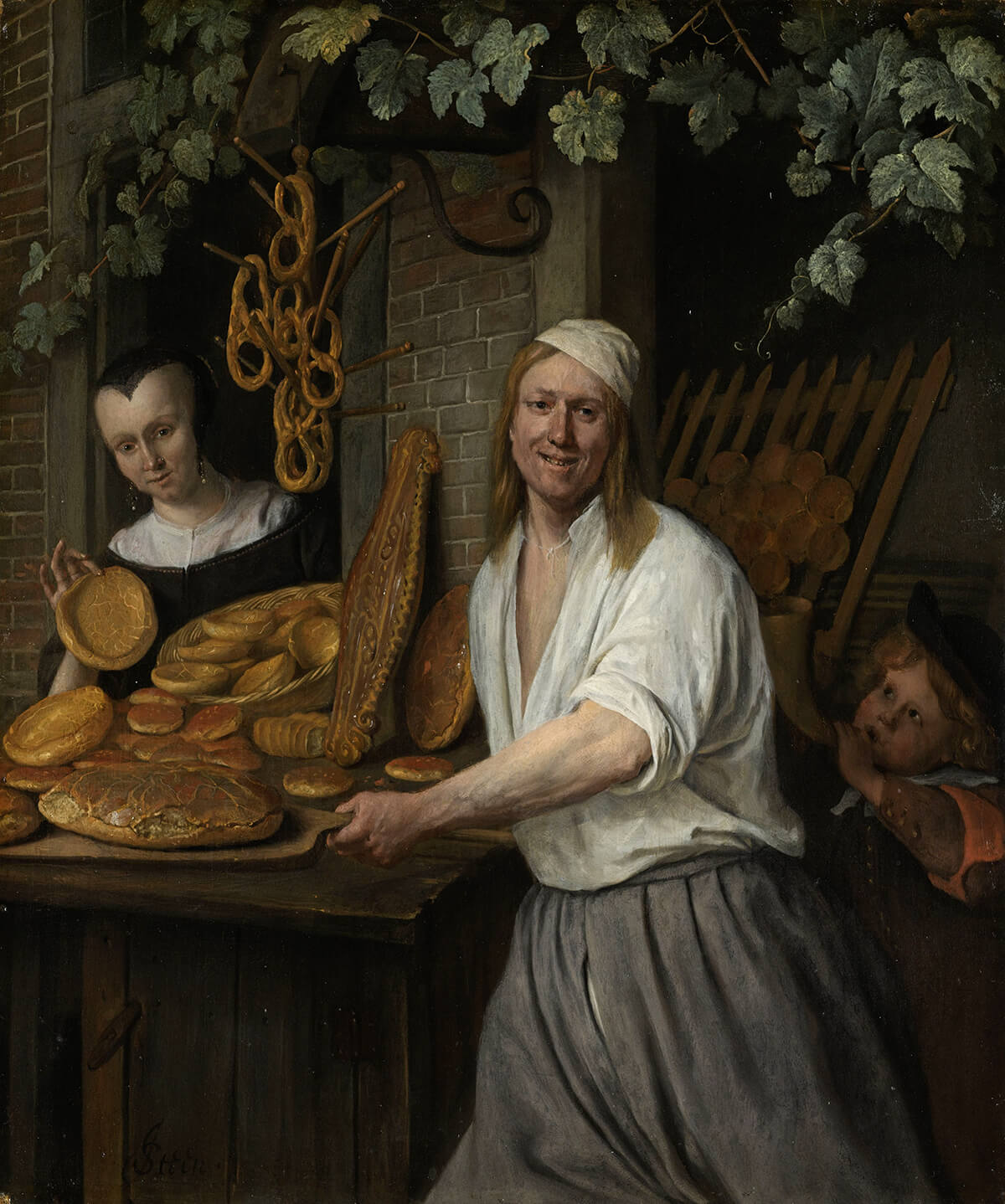

A baker and his wife proudly show off their freshly baked goods. An old inscription on the back of the painting gives the couple’s name. The boy is also mentioned; he is the painter’s son. Jan Steen combined several genres in a single painting. It is simultaneously a portrait, a depiction of a profession, and a still life of bread.
Photo & Text Courtesy: Rijksmuseum
In her book ‘A Taste of Sugar and Spice,’ Deloraine Brohier, a member of the Burgher community, recollects her childhood Christmas breakfasts - “At the other end of the table was a large home-made Flemish dough cake, the breudher. There was salted butter in an earthenware bowl set in water to cool and prevent the butter from melting-set turning oily in the days of no refrigerators. A full ball of Edam cheese with its deep red rind sat as a centrepiece. These were the necessary accompaniments for breudher which in our day was invariably taken with salted butter and Edam cheese.” Further, she goes on to describe the long process that her granny and aunts followed for making breudher - “The making of the breudher took a whole morning of work. It was first kneaded with yeast to make the dough for the cake. For hours tiredly as I remember, Granny and my aunts kept slapping and turning, spooning and twisting the dough and other ingredients by hand till it slipped through the fingers. It was then poured into a special fluted breudher pan and generously sprinkled with plums or raisins before being baked. Granny insisted that the mixture be kept out in the sun before baking for it was believed that it helped the dough to rise and make the cake softer and lighter to taste.”
Brohier talks about eating breudher with Edam cheese. Due to its longevity, this famous Dutch cheese was a staple in the sea voyages. Thus, the red-rinded cheese reached the colonies in the East and became a traditional accompaniment to breudher. Another author from the Burgher community, Rodney Ferdinands describes his Christmas memories in his book Proud & Prejudiced and mentions one more accompaniment to breudher, along with Edam cheese and butter - “There was Breudher (sweet bread eaten with Edam cheese and lots of butter) and Kolu-Kuttu plantains (special expensive bananas) for early morning `tea' (breakfast) on Christmas morning and then the walk up the hill to Wolvendaal Church, or Trinity Church at San Sebastian.” Breudher was eaten with plantains in Kochi too. Butter and Chingan bananas were the traditional accompaniments here.
Kochi had a rich creole cuisine with many dishes like breudher. Over the years, a good number of these dishes, like stews and vindaloos, were assimilated into the mainstream food culture. Some of the dishes failed to make it to the popular cuisine and became a part of the Kochi’s culinary history. Breudher is neither a part of popular cuisine nor a bygone sweet dish. It is still made in small numbers but is not widely available or consumed in Kochi. The breudher makers of Fort Kochi are quite skeptical about its future. Living in this heritage city for a good number of years, they have seen many things fade away with time and feel that the same can happen with breudher too. But, however improbable it might seem, like many old-world snacks making a come back to mainstream food scene, there is a chance of breudher enjoying a revival in Kochi.
Breudher Gallery
Photographs of breudher mixing and baking from Quality Bakery and Elite Hotel
Photo Credits: Aravind Jose & Sudhith Xavier
Published On:
23 December 2016
Last Edited On:
02 January 2017
Let Us Know Your Thoughts
Hope you have enjoyed the story! Let us know your thoughts and feedback.
Story Locations
Explore the locations in this story!
Fort Kochi
Kerala, India
Malacca
Malaysia
Singapore
Singapore
Sources
A big thank you for all the people who has helped us to tell this story!
Dutch Burgher Breudher, Sri Lankan Cuisine
Video presented by Jacqueline Samaratunga
‘Going Dutch with bread’
Article by Tanya Abraham in The Hindu
Singlish Dictionary
Singlish Dictionary
‘New book documents 150 Eurasian artefacts’
Article by Melody Zaccheus in The Straits Times
Forgotten Foods & Mealtime Memories
Article by Sylvia Tan in Biblioasia
A Taste of Sugar & Spice
Book by Deloraine Brohier
Proud & Prejudiced
Book by Rodney Ferdinands
Dihan De Silva
Food Photographer, Sri Lanka

